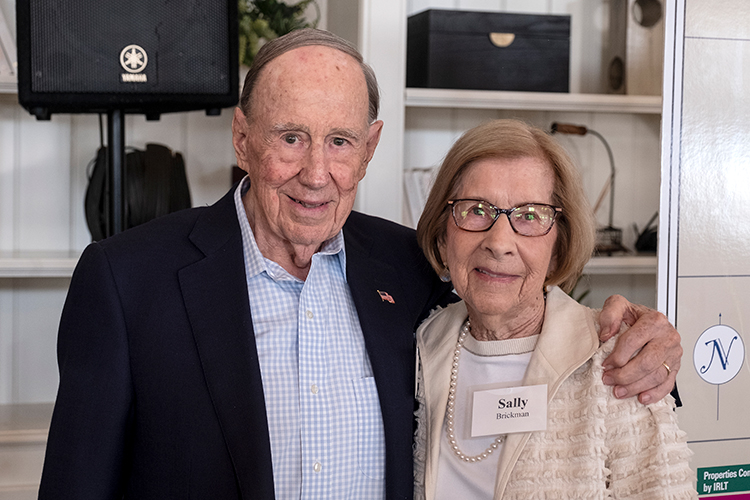Supporters of the Indian River Land Trust gathered at the Quail Valley River Club for the annual Conservators Reception, hosted for the 10th year by Laura and Bill Buck and Sally and Dick Brickman.
As he welcomed guests, Dick Brickman noted that the group has grown significantly over the years.
“As the group grew, your generosity grew. We’ve been able to do some really remarkable things and there’s more to come,” said Brickman.
IRLT board chair Greg Casalino recalled that during a recent visit to the IRLT’s Coastal Oaks Preserve, he had seen a pair of swallow-tailed kites.
“Those swallow-tailed kites have experienced an 80 percent population loss. They’ve gone from habitat in 21 states down to seven. If not at properties like Coastal Oaks Preserve, where are those swallow-tailed kites going to be able to breed?” asked Casalino.
Highlighting their efforts to protect the land that protects the lagoon, IRLT executive director Ken Grudens said that to date they have protected 1,200 acres and more than 12 miles of shoreline through what they refer to as the three Ps.
“We preserve and restore wildlife habitat, protect the scenic waterfront, and provide access for education, recreation and research,” explained Grudens.
He also noted that seagrass, fishery and terrapin research is ongoing at Land Trust properties.
“While the Land Trust continues to strengthen what I call our conservation culture in this community, unfortunately, every year we’re losing areas that are important for fish and wildlife habitat, and we’re still seeing our water quality decline,” said Grudens.
He attributed seepage from degraded septic systems as one factor impacting our waterways.
To accelerate the elimination of these aging residential septic systems, the Land Trust is working on a pilot project in the City of Vero Beach, in partnership with the Clean Water Coalition of Indian River County and the Economic Opportunities Council, “to convert aging septic systems in a low economic neighborhood that is directly and greatly impacting the lagoon.”
A significant gift from Bill Buck was the catalyst that got the project off the ground, he said.
“The nitrogen and the phosphorous that come from the septic systems are the leading cause of the seagrass die out and manatee starvation,” Grudens explained.
He said that when he moved to Vero Beach nearly 20 years ago, he would camp on the spoil islands with his son’s scout troop, recalling the bucolic days watching the boys enjoy the water “without a care in the world.”
“Today, I don’t think I would encourage anyone to wade or swim in the lagoon. I think that our entire Land Trust – and I speak for our board and our staff – would not be satisfied until everyone has a chance to be able to be back in that lagoon and not wondering if the fish that they’re fishing for are safe to eat or worrying that a scratch on their leg might turn into a significant infection,” said Grudens.
“We want your great-grandchildren to be able to sit and watch their children enjoy a completely safe and healthy lagoon. Your support makes that difference. It really truly does. I thank you for being there and for doing that for our community.”
Closing the evening on a high note, he promised more news next year about the Coastal Oaks Preserve and its Living Classroom project, before sharing a video about the recently opened Oyster Bar Marsh Conservation Area, the third of the Land Trust’s public conservation areas, where people can hike or bike.
For more information, visit irlt.org.
Photos by Joshua Kodis

